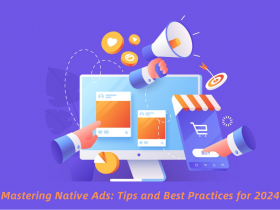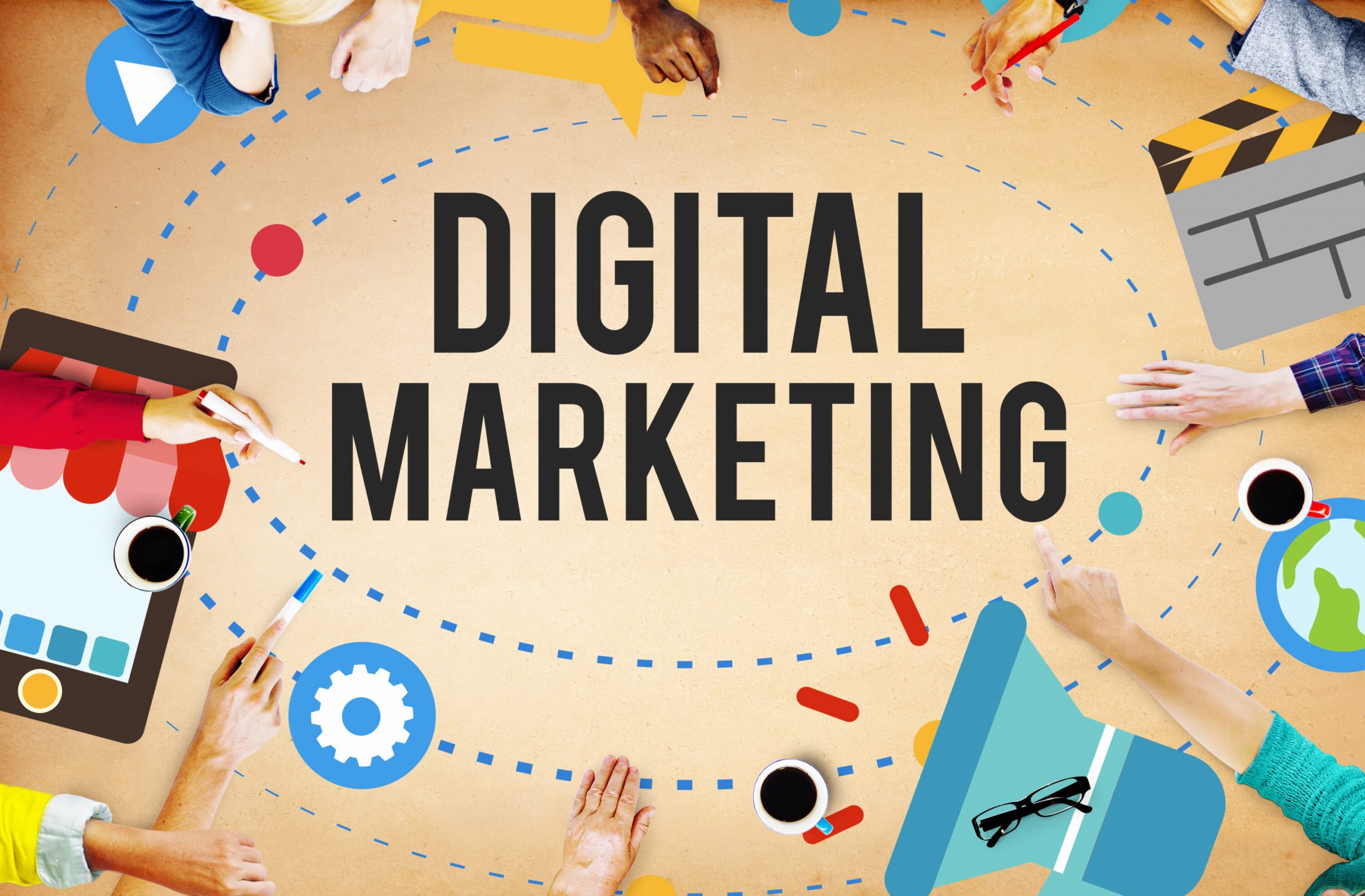Digital marketing is the practice of promoting and selling products or services using digital technologies such as the internet, social media, search engines, mobile devices, and other digital channels. Digital marketing can include various tactics such as search engine optimization (SEO), content marketing, social media marketing, email marketing, online advertising, and more. The goal of digital marketing is to reach and engage with a target audience, build brand awareness, drive website traffic, generate leads, and ultimately, convert leads into customers. Digital marketing allows businesses to reach a larger audience in a cost-effective way and track the effectiveness of their marketing efforts using data and analytics.
Define your goals:

Defining your goals is an important first step in any endeavor, including business and digital marketing. Goals are specific, measurable, and time-bound outcomes that you want to achieve. When it comes to digital marketing, some common goals might include:
- Increasing brand awareness: This involves getting your brand in front of a larger audience and making people more familiar with your products or services.
- Driving traffic to your website: This involves using digital marketing channels to bring more visitors to your website, which can help you generate leads and sales.
- Generating leads: This involves capturing the contact information of potential customers who have shown interest in your products or services.
- Boosting sales: This involves using digital marketing to increase the number of sales you make, either by converting leads into customers or by encouraging repeat business.
- Improving customer retention: This involves using digital marketing to keep your existing customers engaged and coming back for more.
When defining your goals, it’s important to make sure they are specific, measurable, and realistic. This will help you stay focused and track your progress over time. Additionally, make sure to set a deadline for achieving your goals, as this will help you stay accountable and motivated.
Identify your target audience:

Identifying your target audience is a crucial step in digital marketing, as it allows you to create targeted and effective campaigns that resonate with your ideal customers. Here are some steps you can take to identify your target audience:
- Define your ideal customer: Start by creating a profile of your ideal customer, including demographics like age, gender, location, income, and education level. You should also consider psychographic factors like interests, values, and behaviors.
- Conduct market research: Use surveys, focus groups, and other research methods to gather data on your target audience. This could include information on their buying habits, pain points, and motivations.
- Analyze your existing customer base: Look at the characteristics of your existing customers to identify common traits and patterns. This can help you refine your target audience and create more effective campaigns.
- Use digital analytics tools: Utilize tools like Google Analytics to gather data on your website visitors, including their demographics, interests, and behavior. This can help you understand your audience better and create more targeted campaigns.
- Monitor social media: Keep an eye on social media conversations related to your industry or products to gain insights into your target audience’s preferences and behavior.
By identifying your target audience, you can tailor your digital marketing campaigns to their specific needs and preferences, increasing the effectiveness and ROI of your marketing efforts.
Develop a digital marketing strategy:

Developing a digital marketing strategy involves defining your goals, identifying your target audience, and determining the tactics and channels you will use to reach them. Here are the steps to developing a digital marketing strategy:
- Define your goals: As mentioned earlier, defining clear and specific goals is the foundation of any successful digital marketing strategy.
- Identify your target audience: Understanding your target audience is crucial to creating effective digital marketing campaigns.
- Determine your budget: Determine the amount of money you have available to invest in digital marketing and allocate it across the different tactics and channels you plan to use.
- Choose your tactics and channels: Based on your goals and target audience, choose the tactics and channels that will be most effective in reaching and engaging them. This may include social media marketing, email marketing, content marketing, search engine optimization (SEO), paid advertising, and more.
- Create a content plan: Develop a plan for the content you will create and publish across your chosen channels. This should include a mix of different types of content, such as blog posts, videos, infographics, and social media updates.
- Determine your metrics: Determine the metrics you will use to track the success of your digital marketing efforts. This may include website traffic, leads generated, conversion rates, social media engagement, and more.
- Monitor and adjust your strategy: Use analytics tools to track the performance of your digital marketing campaigns and adjust your strategy accordingly. This will help you optimize your marketing efforts and achieve your goals more effectively.
Remember that developing a digital marketing strategy is an iterative process that requires ongoing testing and experimentation. By following these steps and staying up-to-date with the latest digital marketing trends and best practices, you can create a strong digital marketing strategy that delivers results for your business.
Build your online presence

Building your online presence is a crucial part of digital marketing, as it helps you establish your brand and connect with your target audience online. Here are some steps you can take to build your online presence:
- Create a website: A website is a central hub for your online presence, where you can showcase your products or services and provide valuable information to your audience. Make sure your website is user-friendly, mobile-responsive, and optimized for search engines.
- Claim your business listings: Claim your business listings on search engines like Google and directories like Yelp, and make sure your information is accurate and up-to-date.
- Create social media profiles: Establish a presence on social media platforms like Facebook, Twitter, and Instagram, where you can connect with your audience and promote your brand.
- Publish valuable content: Create and publish content that is valuable and relevant to your audience, such as blog posts, infographics, videos, and social media updates.
- Engage with your audience: Respond to comments, answer questions, and engage with your audience on social media and other online channels.
- Use email marketing: Build an email list of subscribers who are interested in your products or services and send regular email newsletters and updates.
- Monitor your online reputation: Monitor what people are saying about your brand online and respond to negative feedback in a constructive and helpful manner.
By building a strong online presence, you can establish your brand, connect with your target audience, and drive more traffic and sales to your website.
Produce high-quality content:

Producing high-quality content is a critical part of digital marketing, as it helps you attract and engage your target audience, build trust and credibility, and drive more traffic to your website. Here are some tips for producing high-quality content:
- Define your target audience: Before you create any content, make sure you know exactly who your target audience is, what their pain points are, and what kind of content they are interested in.
- Choose the right format: There are many different types of content you can create, including blog posts, videos, infographics, social media updates, and more. Choose the format that best suits your message and your audience.
- Conduct thorough research: Do your research to ensure that the content you create is accurate, informative, and useful to your audience.
- Use visual elements: Incorporate visual elements like images, videos, and infographics to make your content more engaging and easier to understand.
- Optimize for search engines: Use relevant keywords and optimize your content for search engines like Google to ensure that it reaches a wider audience.
- Follow a consistent style: Establish a consistent tone and style for your content to build recognition and trust with your audience.
- Proofread and edit: Always proofread and edit your content before publishing to ensure that it is error-free and reads well.
By following these tips, you can produce high-quality content that resonates with your target audience and helps you achieve your digital marketing goals.
Promote your content:
Promoting your content is an essential step in getting it in front of your target audience and achieving your digital marketing goals. Here are some strategies to help you promote your content:
- Share on social media: Share your content on social media platforms like Facebook, Twitter, and LinkedIn. Use relevant hashtags and tag influencers in your industry to increase the visibility of your content.
- Leverage email marketing: Use your email list to promote your content to subscribers who are interested in your products or services.
- Collaborate with others: Collaborate with other businesses, bloggers, or influencers in your industry to cross-promote your content and reach a wider audience.
- Use paid advertising: Use paid advertising platforms like Google Ads or social media advertising to promote your content to a targeted audience.
- Repurpose content: Repurpose your content into different formats such as infographics, videos, podcasts, or slideshows, and promote it on different channels.
- Utilize content discovery platforms: Use content discovery platforms such as Outbrain or Taboola to promote your content to a wider audience.
- Participate in online communities: Participate in online communities relevant to your niche and promote your content by sharing it with the community.
By promoting your content through multiple channels, you can increase its reach, engagement, and effectiveness in achieving your digital marketing goals. Remember to track and measure your results to determine which channels and tactics are most effective for promoting your content.
Monitor and measure your results:
Monitoring and measuring your digital marketing results is essential to understanding how your strategies and tactics are performing and making data-driven decisions to optimize your efforts. Here are some key steps to monitoring and measuring your results:
Define your key performance indicators (KPIs): Identify the specific metrics that matter most to your digital marketing goals, such as website traffic, lead generation, conversion rates, or social media engagement.
Use analytics tools: Implement analytics tools like Google Analytics, Facebook Insights, or HubSpot to track and measure your KPIs.
- Monitor your data regularly: Monitor your data regularly to track your progress, identify trends, and uncover insights.
- Analyze your data: Analyze your data to understand what’s working and what’s not, and make data-driven decisions to optimize your digital marketing strategies and tactics.
- Make adjustments: Based on your analysis, make adjustments to your digital marketing efforts to improve performance and achieve your goals.
- Report on your results: Share your results with your team or stakeholders to demonstrate the impact of your digital marketing efforts and get feedback.
By monitoring and measuring your results, you can continuously improve your digital marketing strategies and tactics and achieve better outcomes over time. Remember to set realistic goals, track your progress, and make adjustments based on your data to stay ahead of the competition and drive success for your business.
Conclusion
In conclusion, digital marketing is a powerful tool that businesses can use to promote and sell their products or services through various digital channels. To be successful in digital marketing, it’s essential to define your goals, identify your target audience, develop a digital marketing strategy, build your online presence, produce high-quality content, promote your content, and monitor and measure your results. By following these steps, businesses can reach a wider audience, build brand awareness, drive website traffic, generate leads, and ultimately, convert leads into customers. As digital technologies continue to evolve, it’s important to stay up-to-date with the latest trends and best practices in digital marketing to remain competitive in today’s digital landscape.




















Leave a Reply